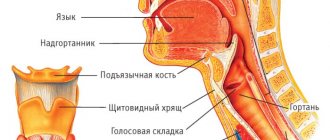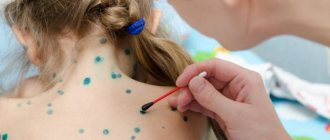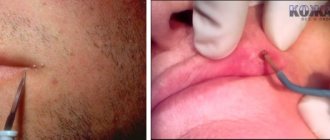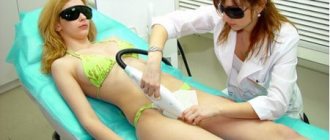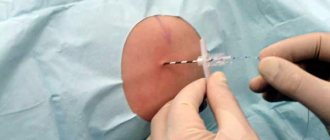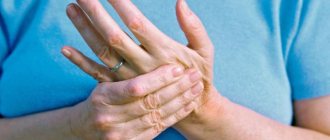Mastopathy is one of the most common breast diseases. A huge number of women around the world suffer from breast pathologies. And every year the incidence increases. This is due to various unfavorable factors, the environment, stress and poor nutrition. According to statistics, about 80% of women are susceptible to mastopathy. Moreover, the risk of occurrence increases with age. After 45 years, mastopathy occurs in every third woman.
Despite the fact that mastopathy is a “female” disease, it is also registered in men. But it occurs much less frequently and only in those who suffer from gynecomastia or serious hormonal disorders.
What is mastopathy?
Mastopathy is a breast disease that develops as a result of hormonal disorders of the body. It is characterized by the proliferation of connective and fibrous breast tissue, which causes the formation of multiple lumps or cysts. Breast mastopathy is a benign disease, but if not treated correctly it can develop into cancer.
Mastopathy (fibrocystic)
Mastopathy is a disease that most often affects women after 40 years of age. But despite this, caution should be shown already at the age of 25.
What to do
Treatment of mastopathy is the only sure way to solve the problem. It is recommended to consult a doctor as early as possible if you suspect the development of the disease.
In the initial stages, drug treatment is prescribed, which includes the necessary medications, as well as vitamins. The patient is given recommendations regarding diet and choosing the right underwear.
In advanced forms of mastopathy, surgical intervention may be prescribed.
Video about the dangers of mastopathy
Causes and risk factors
It is difficult to single out any one cause of mastopathy, because mastopathy depends on a combination of causes.
The main causes of mastopathy include:
- hormonal disorders in the body (long-term use of hormones, insufficient production, tumors of the pituitary gland or adrenal cortex);
- inflammatory diseases of the reproductive system;
- polycystic ovary syndrome (multiple cysts);
- uncontrolled use of combined oral contraceptives;
- type 1 diabetes mellitus;
- early onset of menstruation;
- early menopause (menopause);
- history of abortion;
- pregnancy;
- refusal of breastfeeding;
- chest injuries;
- inflammatory diseases of the mammary gland;
- thyroid diseases;
- malignant or benign tumors;
- taking certain medications;
- surgical interventions;
- chronic liver diseases;
- no pregnancy before age 35;
- chronic stress.
Risk factors for mastopathy:
- hereditary predisposition;
- overweight;
- unbalanced diet;
- climate change;
- sudden weight loss;
- age over 40 years;
- irregular sex life.
All these reasons can lead to mastopathy.
Pathogenesis
The mechanism of occurrence of mastopathy is based on the action of hormones. The condition of the mammary glands depends on progesterone, estrogen, follicle-stimulating hormone and thyroid hormones, which produce prolactin.
Under normal conditions, these hormones do not have a negative effect on the condition of the mammary gland. But if a woman is exposed to provoking factors (inflammatory diseases, injuries, abortions), hormone regulation may be disrupted. As a result, the hormonal background changes, it becomes irregular, alternating with sharp surges and declines.
All this negatively affects the condition of the breast. The action of hormones provokes the development of cysts, fibrous changes in the mammary glands and degeneration into a malignant neoplasm).
Danger of complications of the pathological condition
How dangerous is mastopathy of the mammary gland if it is not treated? The manifestation of this disease to one degree or another negatively affects women's health. The disease negatively affects not only the condition of the breast, but also other areas of the body’s functionality. Experts note that with mastopathy, the consequences can be unpredictable.
Since hormonal imbalance is the fundamental cause of the development of pathology, an imbalance of hormones in combination with an abnormality in the breast leads to the following:
- Menstrual cycle disorder.
- Problems conceiving a child.
- Violation of the psycho-emotional background.
- Difficulties during pregnancy.
Menstruation disorders
With mastopathy, menstruation has a special character, which is due to the increased presence of estrogens and progesterone deficiency. Against the background of this imbalance, the menstrual cycle fails:
| Types of menstrual disorders | Varieties | Pathological features |
| Hypomenstrual syndrome | Opsomenorrhea | The delay in menstruation is 2-4 months. When menstruation occurs, it is scanty. The menstrual cycle is two-phase, but its duration changes due to incorrect follicle maturation and ovulation disorders. |
| Oligomenorrhea | It is characterized by scanty and infrequent periods, which can last only a few hours. The interval between menstruation is 4-6 months. It is a precursor to the development of amenorrhea. | |
| Amenorrhea | Complete absence of menstruation for 6 months. It is provoked by excessive levels of estrogen and extremely low levels of estrogen. In the absence of appropriate therapy, it leads to a decrease in ovarian function, which causes the development of infertility. | |
| Complete absence of menstruation | Caused by the highly active production of certain hormones, pathologies of the ovaries, uterus and fallopian tubes. It is necessary to carry out diagnostics that can determine the connection between menstruation disorders and mastopathy. | |
| Drug-induced amenorrhea | Develops when taking a number of drugs for mastopathy. A similar syndrome is provoked by drugs of the following groups: - sedatives; - sleeping pills; - neuroleptics; - centrally acting hormonal agents (gonadotropin-releasing hormone substitutes and antigonadotropins). | |
| Hypermenstrual syndrome | Menorrhagia | The beginning of menstruation smoothly flows into bleeding, which lasts from 7 days or more, which is dangerous for the development of anemia. Menorrhagia can complicate the course of mastopathy due to the resulting deficiency of vitamins and minerals that the hormonal system needs. |
| Metrorrhagia | Uterine bleeding that has absolutely no connection with menstruation. Develops with pathologies of the ovaries and endometrium of the uterus, which are often provoked by mastopathy. | |
| Bloody discharge between periods | Appear during exacerbation of chronic diseases or new ones that arise against the background of mastopathy. The duration of menstruation itself remains within normal limits, but in the absence of proper treatment, a disruption of its cyclicity may occur. |
Development of infertility
The next complication factor for mastopathy is the development of anovulatory form of infertility.
The inability to conceive a child is explained by the following disorders in the female body:
- A constant delay in menstruation leads to untimely ovulation, which occurs 2 weeks later.
- Lack of egg release due to increased estrogen levels and low progesterone levels.
Similar and other unhealthy conditions with mastopathy lead to the manifestation of anovulatory infertility.
Difficulties during pregnancy
In most clinical situations, the onset of conception helps to get rid of mastopathy. The beneficial effects of pregnancy are explained by the fact that with the birth of a new life, conditioned physiological changes occur in the female body, aimed at creating conditions for the successful bearing of a child:
- The hormonal system is radically restructured.
- Positive changes occur in breast tissue.
All these factors lead to a gradual suppression of mastopathy, and the beginning of lactation steadily consolidates the achieved effect.
However, it should be borne in mind that in case of pregnancy it is prohibited to take most medications that are prescribed for the treatment of mastopathy. As a result, it is difficult to predict how the disease will behave in the absence of drug therapy.
Pregnant women with mastopathy should regularly visit a mammologist, which allows them to monitor the course of the disease and take timely measures to stop its excessive activity.
Chronic depression
Often, mastopathy causes psychological discomfort in a woman. Prolonged worry about her health and fear of developing cancer plunges the patient into a depressive state, which causes the appearance of asthenovegetative syndrome.
Long-term hormonal imbalances negatively affect a woman’s psycho-emotional health. At first, the patient feels tired, which becomes chronic over time. Then other symptoms appear:
- Frequent insomnia.
- Unreasonable irritability.
- Difficulty communicating with people.
In the absence of proper treatment for mastopathy and nervous disorders, the danger of deep depression increases, which leads to an even greater aggravation of hormonal disorders, which in turn complicate the course of mastopathy.
Classification
Mastopathy is classified according to types, forms and degrees.
Types of mastopathy:
- diffuse mastopathy;
- nodular mastopathy.
Diffuse mastopathy
often represents the initial stage. It is characterized by the presence of small pathological changes in the mammary gland and is easier to treat. Diffuse mastopathy, in turn, is divided into forms:
- adenosis;
- fibroadenomatosis;
- diffuse cystic mastopathy;
- fibrocystic mastopathy.
Features of forms of diffuse mastopathy:
| Form of diffuse mastopathy | Peculiarities |
| Adenosis | Characterized by the proliferation of glandular tissue of the mammary gland. It occurs in young women under 30 years of age. |
| Fibroadenomatosis | Characterized by the proliferation of connective tissue. In this case, there is a predominance of fibrosis over glandular tissue. |
| Diffuse cystic mastopathy | Characterized by the appearance of cystic cavities. |
| Fibrocystic mastopathy | The fibrocystic form is a mixed type of diffuse mastopathy. |
Nodular mastopathy
- This is a type of disease that is characterized by a more severe course. If the condition progresses, then there is a high risk of mastopathy turning into cancer.
Nodular mastopathy is divided into the following forms:
- breast fibroadenoma;
- cystic mastopathy;
- fibrocystic mastopathy.
Features of forms of nodular mastopathy:
| Form of nodular mastopathy | Peculiarities |
| Fibroadenoma | It is a dense formation of connective tissue. |
| Cystic mastopathy (nodular) | Characterized by the formation of multiple cysts in the breast tissue. |
| Fibrocystic mastopathy | The fibrocystic form is a mixed version of nodular mastopathy. |
Breast mastopathy is divided into degrees. According to Rozhkova’s classification, there are three degrees of mastopathy
:
- 1st degree – mastopathy without proliferation;
- 2nd degree – mastopathy with proliferation;
- 3rd degree – mastopathy with atypical proliferation (pre-tumor condition).
How dangerous is mastopathy of the mammary gland if it is not treated?
Mastopathy is a diffuse or nodular pathological change that occurs in the soft tissues of the mammary gland.
The disease begins to develop as a result of hormonal imbalance in a woman’s body.
When the first characteristic symptoms occur, you must consult a doctor to prevent complications and the development of more serious diseases. Let's figure out why mastopathy is dangerous.
Etiology of the disease
Mastopathy refers to dyshormonal hyperplastic processes that occur in the mammary gland. This is a fibrocystic disease in which soft tissues are affected and changed. As a result of pathological changes, they can actively reproduce.
Mastopathy develops as a result of an imbalance of connective and epithelial tissue. The disease is more common in women aged 24-48 years. In extremely rare cases, pathology is found in men. One of the main reasons is the neuro-humoral factor.
The disease may begin to develop against the background of the following factors:
- severe stress;
- neurosis;
- depression.
The disease can begin to develop against the background of severe stress
To understand the danger of mastopathy, you need to know the characteristics of the mammary glands. During the menstrual cycle, the body begins to produce hormones. These are estrogens and progesterone. The maximum concentration is observed in the first days of menstruation.
The mammary glands are influenced by hormones from the adrenal glands, pituitary gland and thyroid gland. They are carefully controlled by the cerebral cortex. As a result of the influence of hormones, regular cyclical processes occur in the breast. They manifest themselves in the form of engorgement.
There are several unfavorable factors that can disrupt the normal balance of hormones. This may be a deficiency or increased amount of hormones. They provoke active proliferation of ducts, glandular and connective tissue.
If your breasts remain tight after your period ends, you should consult a doctor. At normal levels, prolactin helps regulate internal processes in the body. His main task is to help the expectant mother. It helps increase the synthesis of components such as breast milk lipids, carbohydrates and proteins.
When a woman finishes lactation, prolactin levels decrease on their own. But there are other negative factors. If prolactin increases outside of pregnancy and breastfeeding, patients face even more serious consequences. Active secretion of the hormone causes:
- autonomic disorder;
- migraine;
- swelling;
- pain in the lower abdomen.
If the secretion of prolactin in the body is increased, then it is classified as a chronic stimulator of the mammary glands. This is why mastopathy occurs more often in such women.
Types of mastopathy
There are several different morphological forms of pathology. What is the danger of mammary gland mastopathy and how to prevent serious complications - these are questions that you need to consult a doctor with.
Scientists have identified a certain classification. It depends on the specific changes that were detected during palpation, mammography, and the results of histological examination.
Diffuse
This form of mastopathy is also called small-focal. This is the initial form of the disease, which is characterized by mild symptoms and no acute pain.
During histology, the doctor identifies several areas in the mammary glands that are normal.
But nearby there are atrophic lobules, hyperplastic areas of soft tissue, small cystic formations, dilated ducts, overgrown connective tissue, and collagen fibers.
The following forms of diffuse mastopathy are distinguished:
- glandular;
- fibrous;
- cystic;
- mixed.
The danger of fibrocystic mastopathy and other forms lies in the disruption of venous outflow. This process is due to the fact that connective soft tissue begins to grow in the mammary gland. If the patient seeks help from a doctor when the first symptoms are detected, the pathology is easily treatable.
Diffuse mastopathy in this case occurs without complications. The initial stage of the disease can be easily cured. If treatment is not started in a timely manner, there is a possibility of development into a malignant tumor. In this case, the patient will need to face serious treatment and long-term rehabilitation.
Nodal
Nodular mastopathy refers to benign changes that occur as a result of hormonal imbalance. This pathology is characterized by the presence of cystic and nodular formations that are observed in the mammary glandular tissue. This is a dangerous form of breast mastopathy .
Mastalgic compactions, hypersensitivity and engorgement of the mammary gland occur in the chest. Secretions come out of the nipples. In most cases, this form of pathology is not dangerous. When menopause occurs, hormonal levels stabilize. Nodular mastopathy completely disappears.
Mixed
The development of a mixed form of mastopathy is caused by infertility, endocrine disorders, obesity, mastitis, late pregnancy, and early menstruation. During diagnosis, the doctor determines the presence of seals and nodes. To confirm the diagnosis, you need to do x-rays, ultrasound and mammography.
During diagnosis, the doctor determines the presence of seals and nodes
As the mixed form of mastopathy progresses, lumps appear in the breast. They are painful, and secretions of different shades may be released from the nipples. The pain can be intense, regular or cyclical. Discomfort intensifies before the onset of menstruation.
If treatment is not started in a timely manner, there is a possibility of developing malignant tumors and neoplasms. This is the most dangerous form of mastopathy, which requires timely treatment. In most cases, the doctor prescribes surgical removal of nodes and tumors if there are no contraindications.
Diagnostics
During your first appointment, your doctor will perform a visual examination of your breasts. Manual examination helps confirm or refute the diagnosis. Additionally, X-ray mammography and ultrasound diagnostics are performed. X-ray is the most informative method. It helps to make the correct diagnosis in 90% of cases.
If the doctor has discovered a pathology of the mammary glands, it is necessary to carefully examine the hormonal levels. Another effective method is ultrasound diagnostics. A specialist will be able to identify a cavity or solid formation and carefully examine the gland. During the study, formations in the form of a tumor are visualized, which are located next to the chest wall.
Features of treatment
To cure diffuse mastopathy, it is necessary to eliminate the factors that caused the disorder of the pituitary gland and ovaries. It is necessary to undergo a gynecological examination to normalize the nervous system and liver function. If the patient has been diagnosed with a nodular form of mastopathy, surgical treatment is indicated.
During the operation, the doctor excises nodes and compacted formations. Specific immunotherapy methods are also used. Recently, doctors carefully choose the method of therapy. After surgical treatment, there is a possibility of re-formation of nodes. They occur along the surgical suture.
Another effective method is conservative observation. After diagnosis, a woman should come to see a doctor. The specialist will monitor the pathological process.
It is necessary to undergo mammography at least twice a year to monitor the condition of nodes and other tumors.
Additionally, patients are prescribed sedatives, potassium iodide, and vitamin complexes.
After diagnosis, a woman should come to see a doctor. The specialist will monitor the pathological process
The conservative method is becoming increasingly popular. Women will be able to avoid surgery. The only drawback is that breast cancer cannot be prevented. Conservative therapy includes a strict diet, the right choice of bra, taking vitamin complexes, diuretics and non-steroidal anti-inflammatory drugs.
The latest remedies help improve blood circulation. With the progression of the fibrocystic form of mastopathy, the patient is contraindicated in physiotherapeutic procedures, visiting the sauna and bathhouse.
Do not sunbathe in the sun or in a solarium. It is important to take care of a healthy lifestyle, eliminate smoking, alcohol and other bad habits.
You need to do light exercises or gymnastics, sleep about 9 hours a day, and avoid stressful situations.
The danger of mastopathy
Mastopathy is a benign disease. But, any pathological changes in the mammary gland are not the norm. Every girl and woman should know how dangerous mastopathy is if it is not treated. Without treatment, there is a risk of serious consequences:
- Development of mastitis. This disease is characterized by inflammation of the soft tissues of the chest. The disease develops in women during lactation. But in some cases, mastitis becomes a consequence of mastopathy. Nodular neoplasms block the milk ducts, causing stagnation of milk in the breast.
- The appearance of cracks in the nipples. As a result, patients develop inflammation of the mammary glands. Pathogenic microorganisms penetrate inside through cracks.
- Sepsis or soft tissue necrosis. These are serious and dangerous consequences of the disease. They require radical measures. Doctors often prescribe breast resection to patients.
- Cancer. With the progression of mastopathy, there is a possibility of degeneration of a benign neoplasm into a malignant one.
Any tumors and nodes in the chest require timely treatment. Nodular mastopathy is characterized by the formation of a neoplasm, so girls and women need to pay attention to their health and well-being. This disease often causes active cell division and proliferation of soft tissues.
Prevention
To prevent the development of mastopathy, it is necessary to protect yourself from strong experiences and stressful situations. The following preventive measures must be observed:
- It is important to find the main reason that led to the development of mastopathy.
- It is necessary to visit a mammologist regularly or according to a schedule. He will be able to assess the condition and structure of the mammary gland. The doctor will quickly find the cause that provokes the inflammatory process.
- Restoring normal hormonal levels. It is prohibited to buy or drink hormonal medications on your own without consulting a doctor.
- Maintaining a healthy lifestyle. It is important to give up all bad habits.
Girls and women need to lead an active sex life. But, the partner must be constant in order to avoid serious problems in the intimate sphere. Sexual dissatisfaction leads to hormonal disorders and has a negative impact on a woman’s health and well-being.
Source: https://MamaZdorova.ru/chem-opasna-mastopatiya-01/
Mastopathy according to ICD-10
In accordance with the International Classification of Diseases, 10th revision (ICD-10), mastopathy is included in the section Benign mammary dysplasia (code N60), which includes the following types:
- N60.0 – Solitary cyst of the mammary gland Cyst of the mammary gland
- N60.1 – Diffuse cystic mastopathy Cystic mammary gland Excluded: with epithelial proliferation (N60.3)
- N60.2 – Fibroadenosis of the mammary gland Excludes: fibroadenoma of the mammary gland (D24)
- N60.3 – Fibrosclerosis of the mammary gland Cystic mastopathy with epithelial proliferation
- N60.4 – Mammary ductal ectasia
- N60.8 – Other benign breast dysplasias
- N60.9 – Benign dysplasia of the mammary gland, unspecified
Symptoms of mastopathy
Depending on the type of mastopathy, symptoms may vary. The disease affects both one mammary gland and two.
The intensity of clinical manifestations depends on the patient’s condition, her age and the location of the pathology.
Main symptoms of mastopathy:
- chest pain;
- tissue swelling;
- feeling of chest fullness;
- nipple discharge;
- breast enlargement;
- lump in the chest.
| Type of mastopathy | Symptoms and clinical manifestations |
| Diffuse mastopathy | Pain in the affected area (dull pain that intensifies during menstruation), burning sensation, feeling of fullness in the chest, tissue swelling, discharge from the nipples (mucous or greenish when an infection is attached), the formation of round lumps (cysts), breast enlargement, enlarged axillary lymph nodes . |
| Nodular mastopathy | Dense nodules, discharge from the nipples, pain when touching the breasts, feeling of fullness in the breasts. |
| Mixed type of mastopathy | There is a combination of symptoms of several types of disease. |
There are several symptoms
, which
are not characteristic of mastopathy
, but
indicate the development of another disease
. If these manifestations occur, you should seek medical help as soon as possible.
These symptoms include:
- bloody discharge from the nipples;
- unbearable pain in the chest area;
- rapid breast growth;
- pronounced asymmetry;
- increased body temperature;
- weight loss;
- pronounced hyperemia of the skin.
What form of mastopathy is the most dangerous?
This disease has several variants of manifestation. Each of them has its own characteristics and characteristics and a different ability to provoke severe complications, including life-threatening ones for the patient.
Mammology identifies the main forms of pathology:
- Nodal.
- Diffuse.
- Proliferative.
- Non-proliferative.
What form of mastopathy is the most dangerous? If we consider them from the point of view of harm to women’s health, the following picture is noted:
| Type of disease | Peculiarities |
| Nodal | Oval or round lumps with clear outlines are felt in the chest, the size of which varies from a pea to a quail egg. The course of the disease has much in common with the signs of breast cancer. To clarify the diagnosis, sectoral resection is required. The presence of nodular mastopathy increases the risk of cancer formation by 5 times. |
| Proliferative | Abnormal cells are capable of active division. There is a high probability of rapid development of a malignant process in the tissues of the mammary glands. |
As you can see, the most unfavorable type of disease is proliferative, in which the risk of developing cancer is high. Manifestation of this disease in nodular form:
- Identical to the symptoms of cancerous tumors.
- Quite often it leads to an oncological process.
In addition, as it develops, mastopathy tends to change from one form to another, which makes it difficult to timely detect benign or malignant formations.
Diagnostics
In the diagnosis of mastopathy, the main role is played by methods that allow visualization of changes occurring in breast tissue. Laboratory, instrumental and other types of diagnostics are used. To diagnose mastopathy, the following studies are used:
- ultrasound examination of the breast;
- mammography;
- CT scan;
- blood test for hormones;
- breast biopsy (if malignancy is suspected).
Additional research:
- ultrasound examination of the pelvic organs;
- Ultrasound of the thyroid gland;
- MRI.
Which doctor should I contact if I suspect mastopathy?
The first specialist who examines a woman if symptoms are present is a gynecologist or mammologist. He interviews the patient and examines the mammary gland.
At the first examination, a specialist can evaluate the following indicators:
- whether there is chest pain;
- presence of seals;
- is there any discharge from the nipples when pressed;
- Are the mammary glands symmetrical?
- change in skin color.
The mammologist examines and palpates the axillary lymph nodes, assessing their uniformity and size. The examination is recommended to be carried out on days 5-10 of the menstrual cycle.
Ultrasound of the breast
Ultrasound examination is the most effective way to diagnose pathological changes in the mammary glands. Due to its safety, it has no contraindications for use.
An ultrasound examination is carried out from the 5th to the 10th day of the menstrual cycle, because it is during this period that the concentration of hormones reaches its maximum, so during this period changes in the breast are best visualized.
What can be seen on an ultrasound:
- cysts or tumors;
- enlarged lymph nodes;
- proliferation of connective tissue.
Ultrasound diagnostics is carried out as a preventative measure in women over 25 years of age. The frequency is once a year or more often if there are complaints. Upon reaching the age of 40, radiography is most often prescribed, but if there are contraindications, it is replaced by ultrasound diagnostics. After 40-45 years, ultrasound should be performed at least 2 times a year.
Mammography
Mammography is the most informative study of breast pathologies. But due to the radiation load, it is used strictly according to indications.
Indications for mammography are:
- chest pain;
- nipple discharge;
- presence of seals;
- sinking of parts of the chest;
- change in shape (asymmetry);
- increase in breast size;
- enlarged lymph nodes and their pain;
- age over 45 years;
- preventive examination of women with a family history (if there are relatives with cancer of the breast or reproductive organs).
What can be seen during radiography:
- cysts;
- tumors;
- proliferation of connective tissue;
- adhesions;
- fibrous connections.
Mammography is performed on days 5–10 of the menstrual cycle. In women with the onset of menopause, this study can be carried out at any time convenient for her.
Breast biopsy
It is performed if a malignant lump in the mammary gland is suspected. To do this, they take a piece of breast tissue and examine it using a microscope.
A biopsy allows timely diagnosis of a tumor in the breast tissue.
For the procedure, general or local anesthesia is used. The choice of pain relief depends on the degree of growth of the pathology.
Typically, no special preparation is needed to perform a biopsy.
In addition to malignant changes, biopsy can predict the degeneration of cells into cancer.
Blood test for hormones
Since changes in the breasts are closely related to a woman’s hormonal background, a blood test for hormones is used to diagnose mastopathy.
Blood sampling is carried out strictly on an empty stomach, during the menstrual cycle from 5 to 10 or from 20 to 25 days of the menstrual cycle.
The main hormones detected in the blood:
- prolactin (a hormone responsible for the regulation of lactation);
- thyroid hormones;
- estradiol (ovarian hormone);
- follicle-stimulating hormone;
- thyroid-stimulating hormone.
The specialist evaluates the results.
Blood test for tumor markers
In addition, if a malignant process in the breast is suspected, an analysis for tumor markers may be required. This test assesses whether a malignant tumor exists in the breast.
Breast tumor markers include CA 15-3. But it should be remembered that there are errors in assessing its concentration.
The tumor marker can increase not only when oncology occurs, but also during the development of autoimmune processes, inflammatory changes and during pregnancy.
Differential diagnosis
Symptoms of mastopathy are rather nonspecific in nature and therefore differential diagnosis is carried out with the following pathologies:
- mastitis (purulent inflammation of the mammary gland);
- breast cancer;
- tumor metastasis from other organs (usually from the reproductive system);
- breast tuberculosis;
- chest injuries;
- breast cyst;
- benign breast tumor (fibroadenoma).
Breast self-examination
Self-examination of the mammary glands allows you to suspect pathology in time and seek medical help.
Breast self-examination should be performed at least once a month starting at age 25.
Breast examination:
- careful palpation (pressing) with fingertips on the mammary gland to detect lumps;
- examination of the mammary glands (color, symmetry assessed);
- breast examination with arms raised;
- careful palpation of the subclavian and axillary lymph nodes (performed with a raised hand);
- inspection of the nipples and gentle pressure;
The effect of mastopathy on the female body
Mastopathy is a benign formation in the breast, one of the reasons for which may be hormonal imbalance.
With increased levels of the hormone estrogen, processes occur in the breast tissue that lead to cell growth and division.
Mastopathy is a benign formation, but there is a risk of degenerating into a malignant tumor. For the treatment of benign tumors, two types of therapy are used: Non-hormonal and anti-hormonal.
Mastopathy is a benign neoplasm in the mammary gland
If for some reason treatment cannot be carried out, then they resort to the use of herbal medicines. The disease does not go away on its own, and after a certain time, cell division occurs. Then breast cancer forms. What can cause this unpleasant disease, its consequences, and what effect it has on the female body, now we will try to figure it out.
Danger of disease
Why is mastopathy developing in women dangerous?
Breast disease can be found in every third woman. Many people postpone treatment of mastopathy without thinking that it can develop into an advanced disease - oncology, which can cause irreversible harm to their body.
Most often, the nodular form of mastopathy acquires a malignant nature. But this does not mean that other diffuse types of the disease can not be treated. Regular examination of the mammary glands is a woman’s health.
If it so happens that during the examination the doctor feels a suspicious tumor, the woman is sent for additional examinations.
At an early stage of the disease, it is recommended to undergo surgery, which will cause minimal harm to the health and appearance of the breast.
If a woman seeks help from a medical center in the late stages of cancer, the breast is completely removed. But this does not always save her life. The danger is that even after removal of the mammary gland, there is a high probability of cancer cells spreading to nearby organs.
Nodular mastopathy on mammogram
Factors influencing mastopathy
The appearance of mastopathy is associated not only with genetic predisposition, lifestyle, but also with environmental influences. The main causes of the disease are considered:
- diseases of the liver, gall bladder and thyroid gland;
- inflammatory process of the uterine appendages;
- bad habits (alcohol and tobacco);
- insufficient amount of iodine in the body;
- stressful situations, depression;
- absence or inconsistent sex life;
- late first pregnancy or its absence.
One of the known factors is irregular sex life, which leads to hormonal imbalance and entails problems with the appendages (ovaries) affecting the production of two main sex hormones - estrogen and progesterone. In turn, they directly affect the mammary gland. Therefore, the slightest problems with the ovaries negatively affect her condition and health.
A woman’s nutrition is one of the physiological factors that is very important and affects the risk of morbidity.
First of all, you need to be careful with caffeine-containing drinks, as they increase the level of prolactin in the blood, which negatively affects the mammary gland.
Modern women eat not only poorly, but also incorrectly. All kinds of semi-finished products significantly increase the risk of its occurrence.
To prevent a woman from experiencing such an unpleasant problem, she should include in her diet as many fruits, vegetables, and herbs as possible, which are not only rich in vitamins, but also contain fiber.
Good foods for the mammary gland include carrots, sweet peppers, apples, and peaches. All of them contain vitamins and microelements that do not allow the development of breast cancer and mastopathy.
The lack of macro and microelements can be easily compensated with the help of tableted vitamin complexes.
Diseases of the gallbladder and liver can provoke mastopathy
The influence of sport on the development of mastopathy
Low physical fitness of women leads to obesity, which negatively affects the entire body as a whole. This is why physical education is needed, but moderate, that is, half an hour a day. This could be running, swimming, walking in the fresh air.
Tobacco smoking is one of the factors that significantly affects women’s health and their mammary glands. This bad habit can provoke such a consequence as the development of cysts in them. Therefore, women who do not smoke, or have quit smoking, have every chance of not getting mastopathy.
How to identify mastopathy. Its danger for a woman
A woman, knowing how to recognize mastopathy, can conduct an independent examination. An important sign of the presence of mastopathy is compactions that can be felt, nodules of different sizes and shapes in the mammary glands. The appearance of nodes and compactions does not cause concern to the woman. Pain may appear several days before the start of the menstrual cycle.
As soon as the menstrual cycle begins, the pain disappears. At the first signs of the disease, you should contact a mammologist.
Mastopathy is a disease that must be treated in order to avoid consequences. If left untreated, it progresses and over time can lead to the formation of a malignant tumor. If the disease is advanced, pain may appear in the armpit and shoulder area. The slightest touch to the chest causes terrible pain.
Breast examination in front of a mirror is carried out 12 days before the start of the cycle
You should independently examine the mammary glands once a month, 12 days before the start of the menstrual cycle.
1. It is necessary to examine the nipples. They must be symmetrical with each other.
2. There should be no ulcers or tightness on the nipples.
- Feel the glands and make sure there is no compaction on them. This must be done in a lying or standing position.
- Examine the skin of the mammary glands. Has its color changed, and is there any swelling?
- In front of the mirror, with your hands raised up, you should inspect the glands from all sides.
- Check the underwear for stains and make sure there is no discharge from the nipples. If discharge appears, you should consult a doctor.
The self-examination is not enough to establish a complete clinical picture. If any signs of the disease are present, then it is also necessary to undergo an ultrasound examination and mammography. The results will be more accurate than self-examination.
Women should have a mammogram or ultrasound once a year. These examination methods will allow timely detection of the disease. Mammography is done for women over 35 years of age.
The mammologist strictly follows the sequence of examinations, based on the patient’s age group. If there is chest pain, lumpiness or discharge from the nipples, then mammography is performed regardless of age category. Ultrasound examination has no contraindications, so it is done at any age, and pregnant women are no exception.
Treatment of mastopathy, if it already exists, can be supplemented using traditional methods. Healing decoctions of chamomile, linden and honey will help relieve pain and relieve inflammation. Lotions with cabbage leaves, camphor oil and kefir have an amazing effect. Treatment with traditional medicine should be strictly under the supervision of a medical specialist.
Source: https://vrachlady.ru/mastopatiya/chem-opasna-mastopatiya.html
Treatment of mastopathy
Treatment of mastopathy is complex and includes the use of medications, surgery and diet. If desired, you can add traditional medicine.
Drug treatment
Treatment includes the use of dosage forms. Therapy can be hormonal and non-hormonal. Hormonal treatment is aimed at the cause that led to changes in the mammary gland, normalizes hormonal levels, reduces the effect of hormones, regulates the functioning of the thyroid gland and ovaries. Non-hormonal treatment is aimed at correcting symptoms, and in some cases affects the cause of the disease (for example, with a lack of iodine in the body).
Hormonal treatment of mastopathy:
| Hormonal treatment of mastopathy | Drugs for mastopathy, their action and method of application |
| Combined oral contraceptives | They are used to normalize the functioning of follicle-stimulating and luteinizing hormones. Take throughout the menstrual cycle, taking a break for 7 days before the expected day of menstruation. Examples: Regulon, Yarina, Ovidon. |
| Drugs that reduce prolactin concentrations | Suppresses the synthesis of prolactin produced in the pituitary gland. The most common prescription is Dostinex. Take 1-2 tablets 3 times a day. |
| Progesterone preparations | Normalize hormonal levels. Urozhestan is prescribed, which is a synthetic analogue of progesterone. Urozhestan is taken starting from the 14th day of the menstrual cycle for the next two weeks. The course of treatment is 2-6 months. |
| Drugs that reduce estrogen concentrations | Blocks excess estrogen production. Tamoxifen is prescribed, which is used in the form of tablets or injections. |
| Drugs for regulating the thyroid gland | Prescribed to regulate the functioning of the thyroid gland. Eutirox is prescribed. |
Non-hormonal treatment:
- non-steroidal anti-inflammatory drugs (Diclofenac, Nise);
- iodine-containing drugs (Iodomarin);
- diuretics (to reduce swelling);
- sedatives (tincture of motherwort, valerian);
- hepatoprotectors;
- vitamin complexes.
Surgical treatment of mastopathy
Surgical intervention in the treatment of mastopathy is rarely resorted to. But if conservative treatment does not give the desired results, and the patient’s condition worsens, then surgery is prescribed.
Surgical treatment is quite serious and has a number of specific indications and contraindications for its implementation.
Indications for surgical intervention:
- an increase in the size of cysts in a short period of time;
- suspected breast cancer;
- large size of formations.
Contraindications:
- pregnancy;
- lactation period;
- severe somatic pathologies.
The operation is performed under general or local anesthesia. The choice of anesthesia depends on the individual characteristics of the patient and the extent of the process.
If the operation is performed under general anesthesia, the patient is hospitalized in a surgical hospital. Before surgery, you need to undergo special training and undergo tests.
Preoperative preparation includes:
- performing ultrasound or radiography of the mammary glands;
- blood and urine tests;
- conducting an electrocardiogram;
- consultation with a therapist;
- consultation with an anesthesiologist.
The operation is carried out in several ways. These include puncture of cysts and complete removal of formations. Let's consider the surgical treatment of mastopathy:
| Type of surgery for mastopathy | The essence and features of surgical intervention |
| Cyst puncture | The idea is to puncture the cyst and extract excess fluid from it. The walls of the cyst become sclerotic and subsequently resolve. It is carried out only on small formations. |
| Removing nodes and other formations | This implies the removal of formations. It is carried out if the node has reached a fairly large size or if cancer is suspected. If there is extensive growth, partial or complete removal of the breast (mastectomy) may be required. |
After the operation, the patient is placed in intensive care, where medical staff monitor her condition for 24 hours, and then she is transferred to a department to await discharge.
Discharge from the hospital is carried out on the 7th day.
Traditional methods of treating mastopathy
Folk remedies are not the only way to treat mastopathy. They are taken as part of complex therapy with the use of drugs.
| Traditional treatment of mastopathy | Cooking method |
| Cabbage leaf compress | Boil the cabbage leaves and grind them to a paste. Next, wrap the resulting mass in a clean cloth, apply it to your chest and secure it. This compress can be done at night. |
| Burdock root decoction | Boil the burdock roots, strain and let it brew. Take ½ cup 14 days after meals. |
| Herbal mixture of yarrow, string and motherwort | You need to take 2 tablespoons of each of these dried herbs and pour boiling water. Take 1 glass before meals 2 times a day for 14 days. |
| Alcohol tincture of walnuts | To prepare, you need to take a handful of peeled walnuts and pour 0.5 liters of alcohol or vodka into them. Then let it brew for 10-14 days. Take 1 tablespoon of tincture once a day for 2-3 months. |
| Decoction of boron uterus | Boil the herb for 10 minutes, then cool and let it brew. Take ¼ cup before the onset of menstruation. |
| Cabbage juice | To prepare it you need cabbage leaves, beets or celery. |
| Beetroot compress | To prepare, you will need 2 fresh raw beets and 2 tablespoons of 9% vinegar. Grate the beets and heat in a water bath, and then add vinegar. Apply to the chest for 10 days. |
| Ointments for the treatment of mastopathy symptoms | Flaxseed ointment, thuja ointment. |
| Hirudotherapy (treatment with leeches) | Use only under the supervision of a qualified specialist. Leeches have the ability to thin the blood and produce special biological substances to normalize metabolic processes in the chest. |
| Cabbage leaf and honey compress | Heat the cabbage leaves to a comfortable temperature, spread 2 tablespoons of honey on top. Apply and secure the resulting compress to the mammary glands. Use at night for 1-2 weeks. |
| Treatment with essential oils | For preparation you will need camphor and medical alcohol. Mix everything in equal proportions and prepare a compress. Apply to the chest area in the evening for 10 days. |
| Propolis-based ointment | To prepare, you need to take a fatty base (vaseline, cream), add propolis. Mix everything thoroughly. Apply the ointment to the affected mammary gland once a day for 14 days. |
Alternative treatment cannot be a complete replacement for conservative therapy! Therefore, these drugs are used only as part of complex treatment. Treatment of mastopathy with folk remedies should begin after consultation with your doctor!
Dangerous consequences for the body of patients with mastopathy
Mastopathy refers to changes of a nodular or diffuse nature that occur in the connective tissues of the mammary gland. The main reason for these pathological changes is hormonal imbalance.
Young women with cycle disorders, existing small cystic formations or severe inflammatory processes in the body, as well as after several abortions are susceptible to it.
To answer the question - why is mastopathy dangerous, you should know about its possible consequences for the body.
Mastopathy detected in late stages or untreated can have serious consequences
What is the danger?
If a woman experiences unpleasant pain in the breast area, then she should know what mastopathy is and what symptoms require immediate consultation with a doctor. In some situations, there is a risk of a benign tumor degenerating into a malignant one.
Any form of the disease is scary for the following reasons:
- Sore breasts most often signal the presence of pathology in the woman’s genital organs. In most cases - in the ovaries. Their damage, like any other organ of the reproductive system, is dangerous for reproductive function. Often, with breast pathology, a woman cannot become pregnant. If no abnormalities are found, then a complete examination should be performed to identify the cause of mastopathy. Mastopathy is often accompanied by gynecological diseases
- Damage to the mammary gland may be a consequence of unfavorable environmental conditions, frequent stressful conditions, promiscuity in sexual activity or heavy stress. This entails a deviation in the normal functioning of the endocrine system, as well as the central nervous system.
- Mastopathy is primarily dangerous because it is considered a precancerous pathology. If there is no proper treatment and care, then the likelihood of malignancy - benign cells acquiring the properties of a malignant tumor - is quite high.
In the absence of timely treatment, the disease can become a serious problem, especially for advanced cases.
Inattention to your health and neglect of treatment can be dangerous
Mastopathy requires careful diagnosis and careful attention. If it is not treated, it is difficult to avoid irreparable consequences. This diagnosis is not so dangerous if the patient takes a responsible approach to therapy and a healthy lifestyle.
Initial and advanced stages
The proliferation of connective tissue of the mammary gland is considered the most common pathology of the mammary glands.
The spread of the disease covers different age categories; mastopathy occurs both in women who have given birth and in fairly young patients. The disease manifests itself in almost 50% of women of childbearing age (diffuse fibrous form), and in an earlier period it is characterized by the proliferation of glandular tissue - juvenile adenosis.
Cystic mastopathy, like fibroadenomatosis, is the prerogative of older people
In patients over 40 years of age, cystic mastopathy is most often diagnosed; it must be treated quickly, through hormonal therapy or surgery. The most dangerous type is the proliferative one, which most often leads to the appearance of a malignant neoplasm.
If a woman is periodically bothered by painful sensations in the breast area, nodules or small lumps are felt, then this may indicate an initial form of mastopathy.
Is this form of the disease dangerous? It can pass without complications, and the woman, after undergoing complex treatment, will forget about pain and stress for a long time. The disease is curable if you seek help in time.
However, in the absence of therapy, the pathology will gradually move from one stage to another, and it will be quite difficult to identify the presence of a tumor: benign or malignant.
Timely consultation with a doctor will help identify dangerous formations in the early stages
The danger of nodular mastopathy
If a patient is diagnosed with nodular type mastopathy, the surgical treatment method is most often chosen. The pathological focus is removed to avoid the possibility of cancer development.
You should not immediately tune in to a terrible outcome, because a malignant neoplasm does not always appear. Benign nodules are most often found in the breasts of young women.
After undergoing certain diagnostic procedures, the doctor can tell exactly what problem the patient is facing. The most commonly used diagnostic methods are:
- histological examination;
- ultrasound;
Puncture of the node is necessary to collect material for histological examination
In most cases, the prognosis is positive. A woman may notice a deviation from the norm after palpating the mammary glands. Dense formations, the sizes of which may vary, are quite clearly felt. They can be isolated or spread in groups.
It is possible that nodules can be clearly felt in each gland. With a responsible approach, nodular mastopathy responds well to treatment, so there is no need to panic.
All unpleasant manifestations of the disease and discomfort are relieved through modern treatment methods.
Every woman should know that breast problems are easier to prevent than to take a long time to treat, so it is important to give up destructive habits, spend more time on your body, and be attentive to your daily diet. This is especially important for women over 40 years old.
An annual medical examination and mammogram are mandatory for women after their fortieth birthday.
Cancerous tumors
Women often do not take mastopathy seriously, but its consequences should be cause for concern.
There is a possibility of breast cancer if the disease consistently changes from form to form in the absence of adequate treatment.
The pathology does not go away on its own, but gradually progresses, causing acute pain and interfering with the normal rhythm of life.
The condition of the gland is directly related to various physiological metamorphoses occurring in the female body. This could be pregnancy, the menstrual cycle, postpartum or menopause.
The presence or absence of gynecological diseases and the condition of the liver are also important.
Impaired liver function affects the balance of hormones and can cause mastopathy
Breast health depends on hormonal balance and the functioning of the endocrine glands. These include:
- adrenal glands;
- thyroid;
- ovaries.
An unfavorable external environment and hormonal imbalance are considered the main factors that affect the health of the mammary glands.
Despite the fact that almost every third woman faces a similar problem, contacting a mammologist is often postponed indefinitely.
It is worth knowing that mastopathy is not dangerous if you regularly visit a doctor, undergo procedures and take medications, but it can develop into cancer if steps to improve your health are ignored.
Only a doctor can make a correct diagnosis, prescribe treatment and assess the condition over time.
Women who have missed treatment for nodular mastopathy are most susceptible to the risk of cancer cell growth. However, even with the diffuse form, you should not neglect the prescribed therapy. It is best to start fighting the disease at an early stage.
A routine examination (palpation of the glands) cannot detect cancer. For this purpose, special diagnostic procedures are provided. At the initial stage of cancer, it is possible to undergo treatment with minimal risk to health, but according to statistics, women rarely suspect that they have a malignant neoplasm.
If obvious external signs of abnormalities appear (there may be no pain), then this may indicate that advanced mastopathy has turned into cancer, and into its severe form.
In this case, only complete breast removal is prescribed. The worst thing you can encounter at this stage is that after the operation the patient’s condition does not return to normal.
This means that cancer cells have spread to nearby organs.
Tumor cells can spread throughout the body through the lymphatic system.
Attention to your health
If a woman has discovered that she has health problems and is often bothered by discomfort in the chest area, then she should not immediately panic. Only a doctor can make a diagnosis and determine the severity of the form of mastopathy, if any. It is recommended to consult a gynecologist or mammologist for the following manifestations:
- discomfort in the chest area in the spring and autumn seasons;
- clear discharge from the nipples;
- aching pain even after the end of menstruation;
Any unusual sensations in the mammary glands should be a reason for a visit to a mammologist
- chest discomfort after stress or physical activity;
- detecting lumps that remain even after menstruation.
There may be no pain if a benign tumor has developed into a malignant one.
If the disease is cured, then even after a full course of therapy it is necessary to come for an examination. Mastopathy can cause complications that appear after a certain period of time.
It can be dangerous if you take contraceptives and hormones without the advice of a specialist, frequently sunbathe in a solarium, or stay in direct sunlight for a long time without protective equipment.
You should also be careful when visiting saunas.
It is better to minimize or even abstain from visits to the steam room or sauna.
When diagnosed with mastopathy, one should not panic, because less than half of women with diagnosed pathology face cancer. In the rest, the disease can be treated conservatively or the benign tumor is removed without danger to life.
Diet for mastopathy
Adequate nutrition for women with mastopathy is one of the important links in treatment. The main role should be given to balanced consumption of products.
The following products can be consumed:
- lean meats and fish;
- seafood;
- seaweed;
- fresh vegetables and fruits;
- seeds;
- dairy products (milk, cottage cheese, kefir);
- vegetable oils;
- liver;
- eggs.
It is necessary to maintain body weight at a level that is comfortable for the woman. Avoid overeating and sudden weight gain.
What should be excluded from the diet for mastopathy:
- chocolate;
- flour products;
- coffee;
- strong tea.
These products contain substances that stimulate the progression of mastopathy and cause increased pain.
Mastopathy during pregnancy
Mastopathy during pregnancy can occur due to sudden fluctuations in hormonal levels. During pregnancy, treatment with hormonal drugs is not permitted; only general recommendations are given to improve the well-being of the pregnant woman.
These include:
- wearing comfortable underwear;
- “air” baths for the mammary glands;
- balanced diet;
- proper rest and sleep.
After childbirth, mastopathy often goes away with the onset of lactation.
Main hazards and consequences
The main danger of mastopathy is the risk of progression to cancer. But it should be noted that breast cancer against the background of mastopathy occurs only in 10% of cases of the total number of patients.
The cystic nodular form of the disease can develop into cancer. But thanks to modern diagnostics and treatment, this complication practically never occurs.
But despite this, every patient should know the main symptoms of breast cancer. Knowledge of this aspect will help reduce the risk of developing dangerous complications and will help prescribe the correct treatment in a timely manner.
The main symptoms of the transition of mastopathy to breast cancer:
- large seal;
- severe pain in the mammary gland;
- bloody issues;
- change in breast skin color;
- enlargement of regional lymph nodes;
- swelling of the mammary gland;
- increased body temperature (especially in the evening);
- rapid weight loss;
- weakness, fatigue.
If you notice these symptoms, you should seek medical help as soon as possible.
How dangerous is mastopathy, if it is not treated - the consequences, what will happen, what it leads to
What is the danger of mastopathy if it is not treated, women who are faced with this diagnosis for the first time are interested. Mastopathy is a benign formation in the mammary gland, which can cause various complications in the absence of proper therapy.
Causes and symptoms
Mastopathy is characterized by pathological growth of connective and glandular tissue in the breast, the formation of cysts, cavities, seals, and nodules in them.
There are diffuse and nodular forms of the disease, the first includes fibrocystic mastopathy, which is the most common.
The main reason for the appearance of mastopathy is a disruption of the normal hormonal balance in the body. Factors that can provoke the development of the disease:
- diseases of the pelvic organs;
- infections;
- sexually transmitted diseases;
- abortions;
- late birth;
- refusal of breastfeeding;
- mammary gland injuries.
It is impossible to name the exact reasons that caused mastopathy. Diagnosis should be made by a doctor, who must be contacted without delay when the first signs of the disease appear.
The following symptoms may indicate the development of fibrocystic mastopathy of the mammary glands in a woman:
- the appearance of chest pain - before, during or after menstruation;
- pain on palpation of the breast;
- swelling of the mammary glands;
- seals that are detected by palpation;
- discharge.
What is the danger of mastopathy if it is not treated?
What will happen if mastopathy is not treated, what are the consequences and prognosis for the patient? Mastopathy is a benign tumor. In the initial stages, it responds well to drug treatment. However, the lack of proper therapy significantly increases the risk of the tumor becoming malignant.
So is mastopathy dangerous or not and what does this disease lead to? Contacting a mammologist when the first signs of pathology appear will help stop the progression of mastopathy, eliminate symptoms, and improve well-being.
Thus, ignoring the diagnosis of mastopathy leads to a significant increase in the risk of breast cancer. You can avoid this by visiting your doctor in a timely manner and undergoing a breast examination.
What does a tumor affect?
The opinion that mastopathy affects only the mammary glands is erroneous.
The presence of pathological foci has a negative impact on the entire body and causes certain symptoms:
- On the nervous system: headaches, constant fatigue, low mood occur.
- On the digestive tract: possible nausea, stomach problems.
- On the endocrine system: problems with the thyroid gland are likely.
- On the reproductive organs: manifested by menstrual irregularities, decreased libido, and the appearance of pain in the ovaries.
What to do
Treatment of mastopathy is the only sure way to solve the problem. It is recommended to consult a doctor as early as possible if you suspect the development of the disease.
In the initial stages, drug treatment is prescribed, which includes the necessary medications, as well as vitamins. The patient is given recommendations regarding diet and choosing the right underwear.
In advanced forms of mastopathy, surgical intervention may be prescribed.
Video about the dangers of mastopathy
Prevention measures
It is much easier to prevent a disease than to treat it later. This rule is also relevant for mastopathy.
Prevention measures include regular breast examinations. For women over the age of 35, it is necessary to undergo mammography once every 2 years; after 50 years, this must be done annually.
Other recommendations:
- regular breast self-examination;
- balanced diet and avoidance of harmful foods;
- healthy lifestyle;
- physical activity;
- compliance with the work and rest regime;
- correct bra size.
How dangerous is mastopathy if it is not treated? Refusal of therapy leads to the possibility of developing cancer. The risk is quite high and is about 60%. Only timely consultation with a doctor, treatment and compliance with the doctor’s recommendations will allow you to get rid of the disease and return to a healthy and fulfilling life.
All information is provided for informational purposes. Do not self-medicate. At the first sign of disease, consult a doctor.
Source: https://zdorove-zhenshhiny.ru/chem-opasna-mastopatiya-esli-ee-ne-lechit.html
Forecast
Mastopathy in most cases is an absolutely benign disease that is not likely to pose a threat to the patient’s life. With unadvanced mastopathy, the prognosis is favorable.
Prognostically unfavorable is the risk or transition of mastopathy to cancer. In this case, the success of treatment will depend on how early the patient sought medical help.
An important role in assessing the prognosis of the disease is played by the patient’s condition, her age, the extent of the process and concomitant diseases.
Prevention of mastopathy
Prevention of mastopathy should be done starting from the age of 25. It is from this age that changes occur in the body, which can subsequently become a trigger for the formation of mastopathy or other pathological changes in the mammary glands.
The main preventive measures are:
- undergoing an annual medical examination by a gynecologist or mammologist;
- Ultrasound of the mammary glands;
- mammography of the mammary glands;
- breast examination itself (at least once a month);
- maintaining breastfeeding if possible;
- wearing the right underwear (the bra should not put pressure on the mammary glands);
- avoiding stress;
- balanced diet with sufficient vitamins and minerals;
- regular sex life;
- quitting smoking and alcohol;
- avoiding injury to the mammary glands;
- good sleep;
- avoiding contact with harmful chemicals;
- decreased exposure to open sun;
- control over the intake of hormonal drugs.
Probability of death due to mastopathy
Do people die from mastopathy? It is from mastopathy that people do not die, although it to some extent worsens the patient’s quality of life, it can be successfully cured. Death does not come from it, but from the complications that it provokes, that is, from the development of malignant neoplasms in the mammary glands.
Today, every third case of mammological oncology in the breast ends in the death of the patient, which occurs within a year after the cancer is diagnosed. In other words, the diagnosis of a malignant tumor was carried out at an already advanced stage of the pathology, when the chances of recovery are zero.
Oncologists consider stages zero, first and second to be early stages, which can be successfully cured with intensive therapy. However, in the third and fourth stages, the chance of a favorable outcome is significantly reduced.
The risk of death depends on the following factors:
- How timely the woman sought medical help.
- How effective were the therapeutic regimens?
- The degree of aggressiveness of the pathological process in the chest.
- The rate of tumor malignancy in the female body.
- Individual reaction of the body to the applied treatment methods.
To prevent such a pathological situation, you should not avoid routine examinations by a specialist. If treatment is prescribed in a timely manner, mastopathy can be successfully cured.
Outpatient observation
After completing the main treatment of mastopathy, it is necessary to be constantly monitored by a mammologist. And this applies not only to women with mastopathy. In addition to them, women with a hereditary predisposition to the development of pathologies of the mammary gland or reproductive system are subject to constant medical supervision.
Dispensary observation plan:
- conducting ultrasound diagnostics in women;
- performing mammography;
- examination by a mammologist;
- visiting a gynecologist;
- performing ultrasound of the pelvic organs;
- testing for sexually transmitted infections;
- colposcopy.
Reviews
Anna, 32 years old “Mastopathy after childbirth”
With the onset of lactation, my breasts began to hurt and my ducts became inflamed. When visiting a doctor, he was diagnosed with mastitis. After a detailed examination, I found out that I have mastopathy and the cyst blocked the duct. Breastfeeding had to be stopped due to treatment. Now I’m expecting my second baby, there are no signs of mastopathy. I hope breastfeeding will not be interrupted this time. After all, as the doctor explained to me: “Breastfeeding is the best protection against mastopathy.”
Maria, 29 years old “My breasts hurt, I went to the doctor, it turned out to be mastopathy”
At one point, severe chest pain appeared. After the examination, we were sent for an ultrasound, where the diagnosis of mastopathy was confirmed. There were a lot of doubts and fears, but when I completed the course of treatment, I forever forgot what mastopathy was. Now I undergo regular examinations to prevent relapse.
Evgenia, 33 years old, “I discovered a lump in my breast. They said: "Cut"
I discovered a lump in my chest, after an examination the doctor suggested cutting it out. After the operation, she underwent a course of treatment. It was a long time ago, but now I found out that mastopathy can be treated with medications. She was treated 6 years ago, after which she became pregnant and breastfed the child. No more mastopathy.
